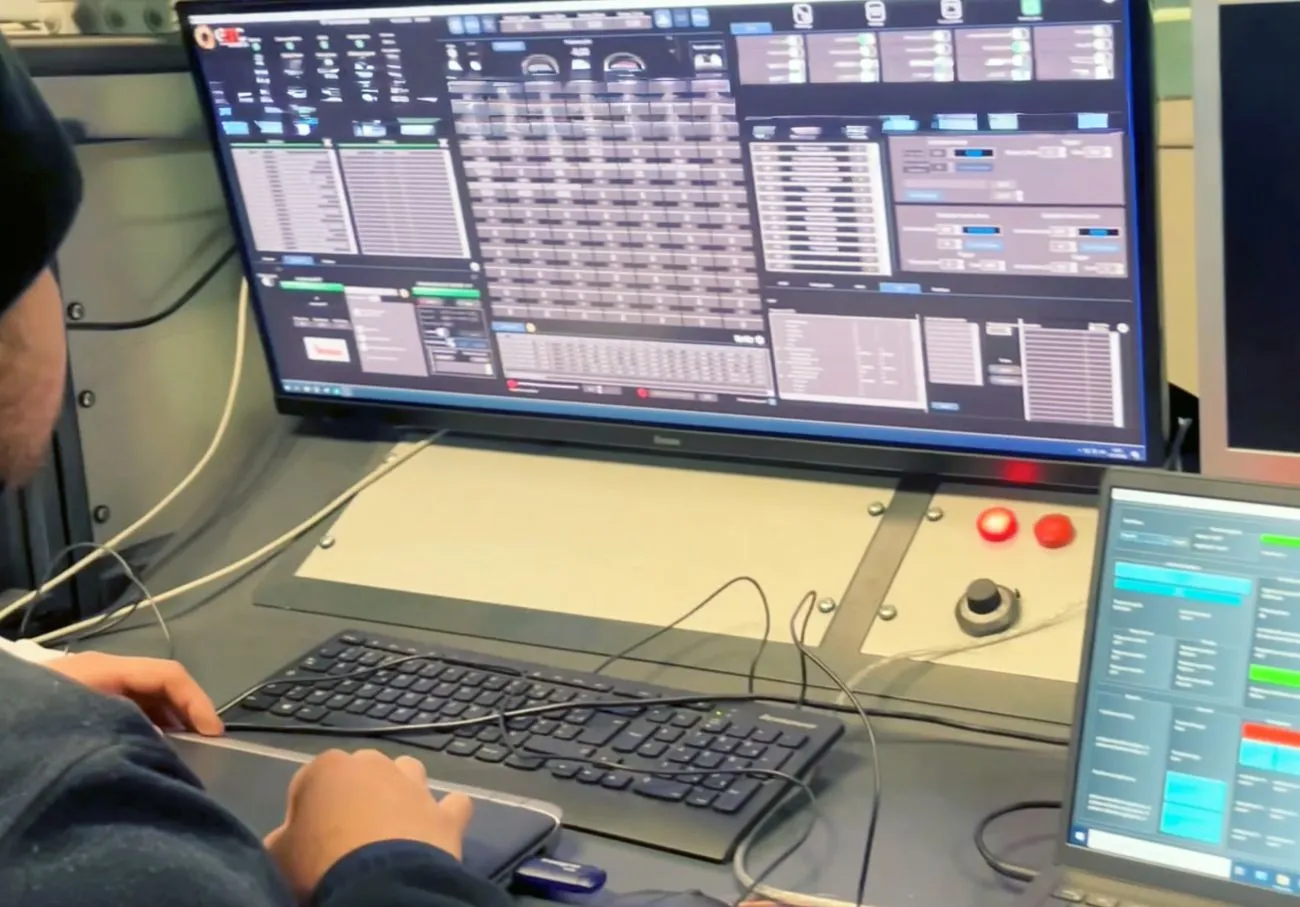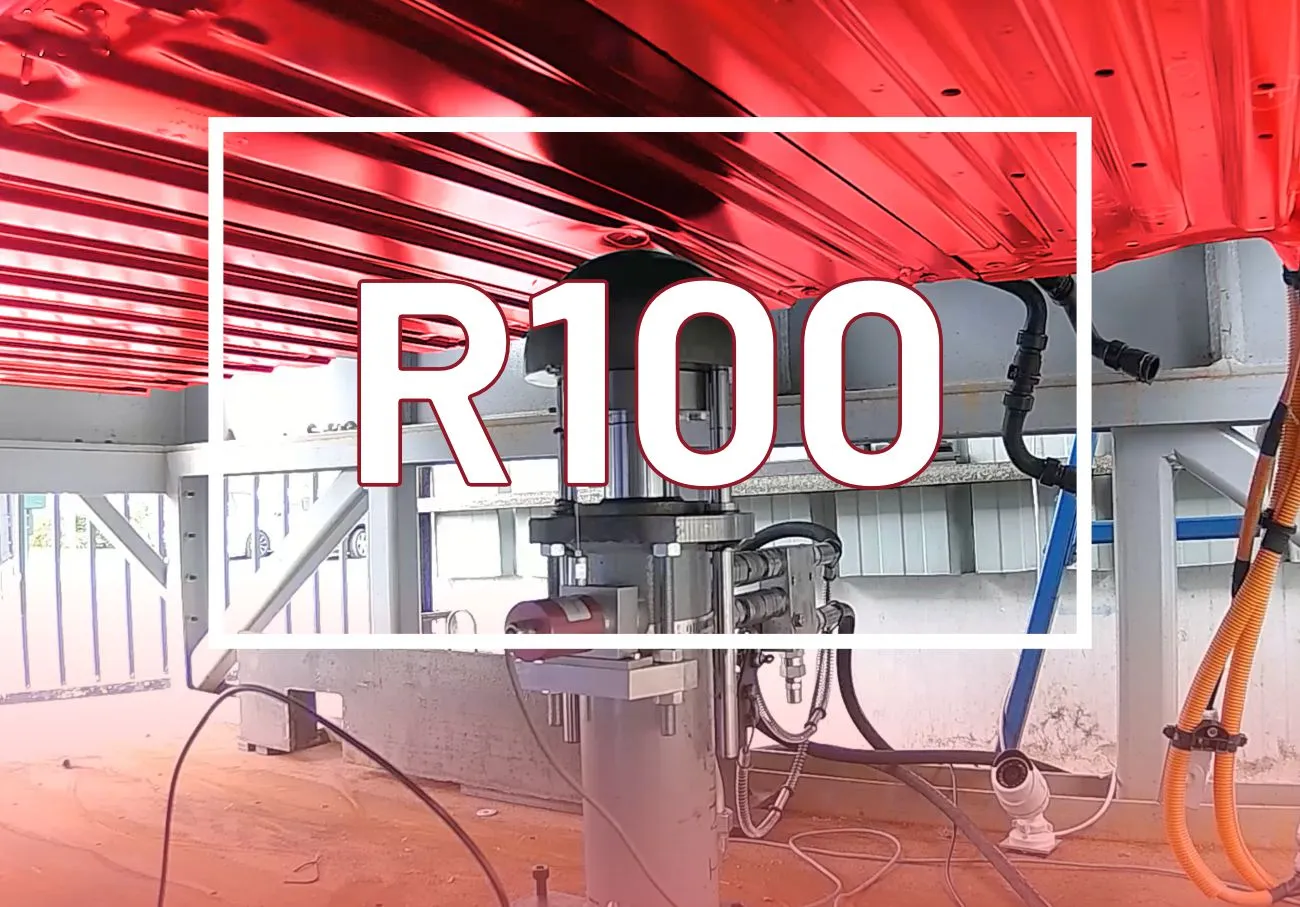Battery cycling tests
Performance, reliability and durability
Validate your batteries under controlled conditions of use with the Emitech Group's cycling benches
In the field of electric mobility, battery performance, reliability and service life are crucial issues. Cycle testing allows design validation, quantification of the impact of ageing and assurance of compliance with industry requirements. The Emitech Group supports design engineers, test technicians, quality managers and project managers in the characterisation and validation of energy storage systems, particularly for electric and hybrid vehicles.
Our services are based on state-of-the-art thermal and electrical cycling benches, designed to test cells, modules or complete packs under representative conditions of use and in accordance with international standards such as IEC 62660-1.

Why carry out cycling tests?
Assessing performance and service life
- Determine the number of charge/discharge cycles a battery can withstand before its capacity falls below 80% of its nominal value.
- Quantify capacity loss, internal resistance, memory effects or functional drift.
Understanding ageing mechanisms
- Identify the effects of current, temperature, SOC and depth of discharge on service life.
- Differentiate between calendar and cyclic ageing phenomena.
- Simulate the impact of fast, partial, asymmetric or intensive cycles.
Optimising design and operation
- Adapting load/discharge profiles to specific use cases (urban, motorway, industrial, etc.)
- Optimise BMS strategies based on real-life situations.
- Validate new chemistries, formats or mechanical configurations.
Meeting regulatory standards and requirements
- Carry out tests in accordance with IEC 62660-1 (lithium-ion cell life cycle).
- Contribute to ECE R100 compliance (9B test - thermal cycling).
- Integrate the constraints of manufacturers' reference systems or CE marking.
Test methodology and technical protocol
Electric cycling
- Application of dynamic profiles (e.g. WLTP, RDE) with variable current charge/discharge alternation.
- C/charge rates adjusted according to specifications: fast, slow, partial charge.
- Performance evaluation in terms of capacity, voltage, temperature, current, coulombic efficiency.
Thermal cycling
- Integration into regulated climatic chambers: from -40°C to +85°C depending on model
- Controlled temperature variation to reveal the combined effects of thermal and electrical stress.
- Integration of thermal management loops (oil, water-glycol).
Real-time monitoring and analysis
- CAN monitoring (via VECTOR BMS interfaces)
- High-frequency ADQ (up to 2 MHz) to capture fast transients
- 150+ isolated thermocouple channels (up to 1000 V)
- Integrated safety limits, thermal runaway management
Talk to our battery cycling experts
Technical specifications of 2 of our models of cycling benches
| Model | Battery dimensions | Enclosure temperature | Thermal fluid | Simulator capacity |
|---|---|---|---|---|
| Model 1 | 1.4 m x 2.0 m | -40°C to +85°C | -35°C to +95°C | 250 kW / 1000 V / 1000 A |
| Model 2 | Module or small pack | -30°C to +55°C | -30°C to +70°C | 250 kW / 1000 V / 1000 A |
Options:
- 2 CAN buses, multi-channel management
- Integrated limiters for runaway
- HIL/BIL scenario simulation for coupling with BMS
Types of batteries tested
- Lithium-ion cells (NMC, LFP, NCA)
- High voltage modules
- Complete packs (EV, PHEV, LCV, stationary batteries)
- Prototype solid batteries, sodium-ion, lithium metal, etc.
Benefit from the advantages of the Emitech Group's test centres
- Configurable resources for your specific cycles
- Possibility of testing over several weeks/months
- Integration into multi-standard validation plans (UN38.3, ISO 12405, ECE R100, etc.)
- Expertise in results processing, interpretation and customer reporting
Related Services
Needs
Discover a selection of additional resources that explore topics related to this page including regulatory contexts, technical articles, and specific areas of expertise. These materials provide further insight to help you better understand the key challenges and available solutions.
Contact us for a quote











